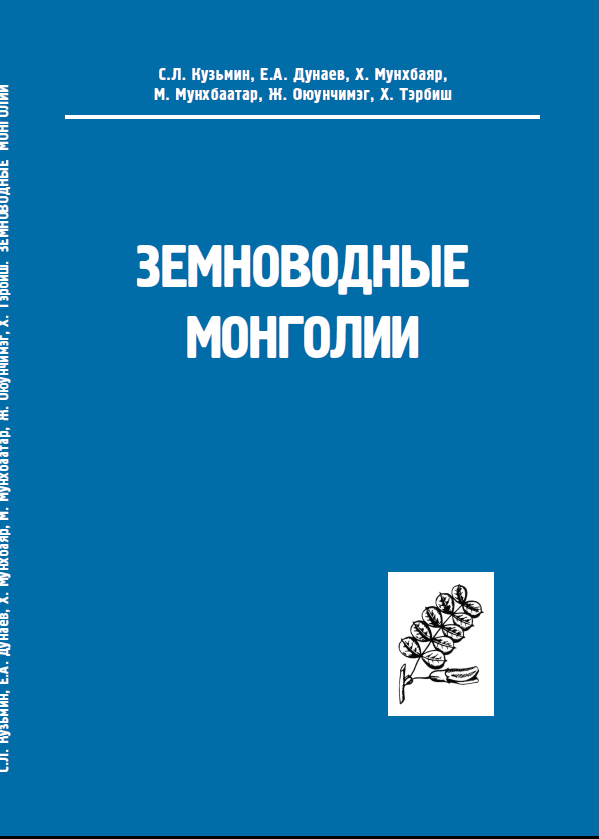|
Strauchbufo raddei (Strauch, 1876)
Mongolian Toad | family: Bufonidae genus: Strauchbufo |
 © 2012 Dr. Peter Janzen (1 of 7)
|
|
|
|
Description Distribution and Habitat Country distribution from AmphibiaWeb's database: China, Korea, Democratic People's Republic of, Mongolia, Russian Federation
Bufo raddei inhabits the edges of coniferous and deciduous forests, groves, bushlands, different types of meadows, forest steppes and steppes with sandy, rocky and alluvial soils. The species is abundant in many settlements, some cities and in agricultural landscapes. It occurs both in wet and in dry habitats. Even in the steppe zone, it can occur not only near water bodies (rivers, ponds, lakes etc.), but at a considerable distance from water. However, in dry and continental desert areas the toad is tied to lakes and other permanent water sources. Such populations often are isolated from other populations by vast areas unavailable for amphibians. Spawning occurs in lakes and ponds with stagnant water. Life History, Abundance, Activity, and Special Behaviors Metamorphosis occurs in June - August. Reproduction in shallow waters leads to high tadpole mortality in the drying wetlands. Otherwise, in some cases, tadpoles overwinter and complete their transformation the following summer. Tadpoles eat mainly algae and detritus. Recently metamorphosed juveniles mainly eat mites and small insects, particularly Collembola. Adults prey upon spiders, caterpillars, beetles (Carabidae, Curculionidae, Tenebrionidae etc.) and, especially, ants. The latter represent an especially important component in dry habitats. Trends and Threats Relation to Humans Comments
References
Bannikov, A. G., Darevsky, I. S. and Rustamov, A. K. (1971). Zemnovodnye i Presmykayushchienya SSSR [Amphibians and Reptiles of the USSR]. Izdatelistvo Misl, Moscow. Bannikov, A. G., Darevsky, I. S., Ishchenko, V. G., Rustamov, A. K., and Szczerbak, N. N. (1977). Opredelitel Zemnovodnykh i Presmykayushchikhsya Fauny SSSR [Guide to Amphibians and Reptiles of the USSR Fauna]. Prosveshchenie, Moscow. Fei, L. (1999). Atlas of Amphibians of China. Henan Publishing House of Science and Technology, Zhengzhou. Kuzmin, S. L. (1995). Die Amphibien Russlands und angrenzender Gebiete. Westarp Wissenschaften, Magdeburg. Kuzmin, S. L. (1999). The Amphibians of the Former Soviet Union. Pensoft, Sofia-Moscow. Nikolsky, A. M (1936). Fauna of Russia and Adjacent Countries: Amphibians (English translation of Nikolsky, 1918, Faune de la Russie et des Pays limitrophes. Amphibiens. Académie Russe des Sciences, Petrograd, USSR). Israel Program for Scientific Translations, Jerusalem. Stejneger, L. H. (1907). Herpetology of Japan and Adjacent Territory, United States National Museum Bulletin 58. Smithsonian Institution, Washington, D. C.. Terent'ev, P. V. and Chernov, S. A (1965). Key to Amphibians and Reptiles [of the USSR]. Israel Program for Scientific Translations, Jerusalem. Vorobyeva, E. I. and Darevsky, I. S. (eds.) (1988). Amphibians and Reptiles of Mongolian People's Republic: General Problems. Amphibians.. Moscow. Won, H.-K. (1971). Choson Ryangso Pyachyungryuchji [Amphibian and Reptilian Fauna of Korea]. Korean Academy of Sciences, Pyongyang. Ye, C., Fei, L., and Hu, S. Q. (1993). Rare and Economic Amphibians of China. Sichuan Publishing House of Science and Technology, Chengdu. Zhao, E. and Adler, K. (1993). Herpetology of China. Society for the Study of Amphibians and Reptiles, Oxford, Ohio. Zhao, E. and Zhao, H. (1994). Chinese Herpetological Literature: Catalogue and Indices. Chengdu University of Science and Technology, Chengdu. Originally submitted by: Sergius L. Kuzmin (first posted 1999-09-30) Edited by: Kellie Whittaker (2017-03-05) Species Account Citation: AmphibiaWeb 2017 Strauchbufo raddei: Mongolian Toad <https://amphibiaweb.org/species/265> University of California, Berkeley, CA, USA. Accessed May 29, 2025.
Feedback or comments about this page.
Citation: AmphibiaWeb. 2025. <https://amphibiaweb.org> University of California, Berkeley, CA, USA. Accessed 29 May 2025. AmphibiaWeb's policy on data use. |




 Map of Life
Map of Life Read more about The Amphibians of Mongolia by Kuzman 2017
Read more about The Amphibians of Mongolia by Kuzman 2017